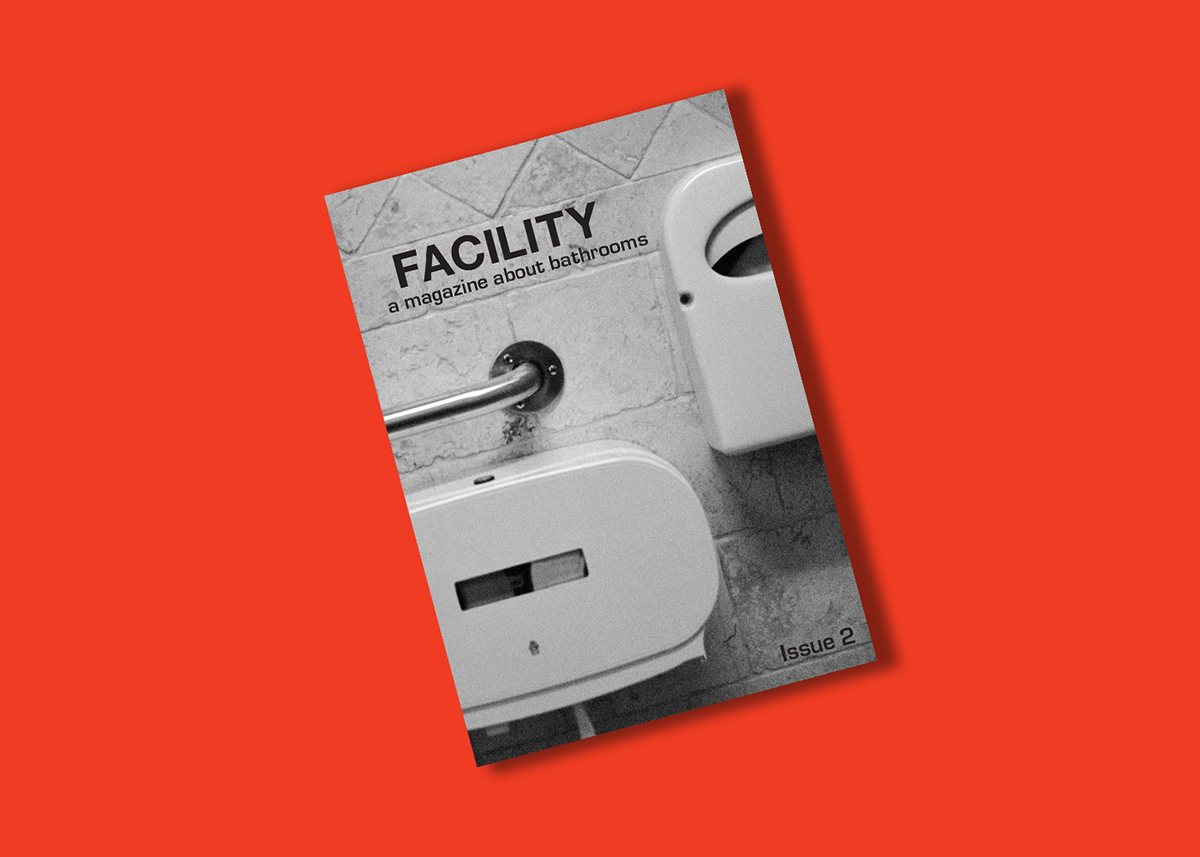Sign up for the daily CJR newsletter.
In the back of Facility magazine is a list of door entry codes for bathrooms throughout New York City: the TJ Maxx near Union Square, the Standard Hotel in the East Village. Even though the publication keeps a more up-to-date list on its website, sometimes the codes change. (Chipotle is particularly notorious for this.) When in doubt, the magazine advises that many places print their bathroom codes on their receipts—those can be lifted from trash cans. Some bathrooms in the list come with an extra endorsement: “a reader says this bathroom is the ‘shit,’” Facility noted for a Guitar Center in Queens.
The most basic of needs is what informs the rest of the independent, hundred-plus-paged, black-and-white magazine devoted to all things bathroom and hygiene.
Erin Sheehy conceived of the magazine with another writer, Elizabeth Gumport, in 2019. “When I actually started thinking of it,” Sheehy says, “all of a sudden I had around like twenty ideas for stories, and they were actually good.”
Sheehy and Gumport, who edit the magazine together, realized it was a specific way to address the broad topics they were interested in, including public spaces, city infrastructure, and the environment, while thinking about gender, race, class, and disability. “It was like, you can talk about all those things, and it might be funny or gross, but there’s something sort of freeing about it being a little silly like that,” Sheehy said.

Reily Joel Calderón’s renderings of futuristic public restrooms that prioritize inclusivity and recreation are among some of the art featured in the magazine.
They took inspiration from a seventies magazine about “gourmet bathing” called Wet. Even though Sheehy says the magazine didn’t really define gourmet bathing, it had a compelling sensibility in covering topics beyond hot tubs. (It’s a lens that’s proved of interest to a few other writers as well.)
The first issue of Facility explores history with stories like “How’d We Get Segregated Bathrooms, Anyways?” by Gumport and “The Groom of the Stool,” by Sheehy, about Henry VIII’s bathroom servant. The issue recounts events like the 504 Sit-in that helped ensure disability access in public spaces (yes, including bathrooms) and riots over sanitation at the El Paso–Juarez border in 1917.
These stories sit between sink photography, morning-routine surveys, interviews with plumbers, and reviews of pill capsules and cleaning ingredients. Facility leans into the inherent silliness of the topic—there’s a guide on which household item best replicates the look of urine—but deftly maneuvers through being a literary publication, art portfolio, beauty blog, and trade magazine. Its stories can be read on their own, but like any good magazine, the full issue of Facility offers its own rewards.
They were working on the second issue when the pandemic hit, and Sheehy initially had her doubts. “It was like, should we be making a bathroom magazine right now?” But soon people started reaching out to her, talking about fears around contamination, hygiene, restricted access to public bathrooms, and more. What was originally planned to be shorter became another full-fledged issue.
In that issue, Joyce S. Lee, a researcher and zine creator, explored toilet paper design. “I had been thinking about embossing on toilet paper as analogous to that on business cards, a symbolic rather than functional enhancement,” Lee wrote. “I hadn’t considered that embossing’s texture could play a role in performance––the same way that the weave of dish towels functions differently than, say, that of a bath towel.”
Lee mused on the broader utility of toilet paper, reflecting on its scarcity at the start of the pandemic and drawing from her experience as a Peace Corps volunteer in Senegal, where she became used to washing with water instead. As her Peace Corps instructor put it: “Imagine you had poo on your hand—would it feel cleaner if you wiped it off with some paper, or if you washed it with soap and water?” (Yes, they do review bidets.)
An essay by Ward 5B, “Bleach: The Scent of Plague,” recalls how bleach once again permeated his senses during the coronavirus’s initial outbreak, just as it had over thirty years ago during the aids epidemic. In another story, Sheehy penned an essay about the role of water in protests during the summer of 2020 after George Floyd’s death.
Sheehy and Gumport financed the first issue of Facility themselves; sales from the first issue paid for the second. They print the magazines out of a facility in Queens, and then ship them out of Sheehy’s apartment in Brooklyn. It’s a small operation that doesn’t yield much profit. “We’re just delighted by the idea that someone would find this in twenty years,” she said, “and be like, ‘What is this?’”
Has America ever needed a media defender more than now? Help us by joining CJR today.










